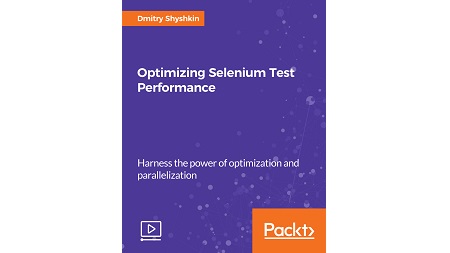
English | MP4 | AVC 1920×1080 | AAC 44KHz 2ch | 1h 12m | 271 MB
Leverage the benefits and advantages of Selenium 3.0
Selenium 3.0 is a significant change as it has been shipped after a gap of 5 years. It is only a drop-in replacement for WebDriver API users; however, it has removed the major Selenium core implementation. The Selenium WebDriver API is fully object-oriented as opposed to the deprecated Selenium RC. The WebDriver API provides multi-language support and runs tests on all popular browsers. As your knowledge (and the size of your test suites) grows, performance becomes a key factor for development teams to successfully adopt your automation.
In this course, we’ll focus on the most common performance bottlenecks and how to work round them through optimization and parallelization. We’ll finish the course with the use of Selenium Grid and Sauce Labs for limitless parallelization and other goodies.
This is a hands-on guide to enhancing your Selenium test performance
What You Will Learn
- Create distributed user testing to perform multi-user tests
- Optimize test timings
- Learn to set up Selenium Grid
- Look into maintaining your grid
- Discover the advantages of parallel execution
- Explore the benefits of automated testing cloud
- Learn to set up tests on Sauce Labs or similar testing cloud providers
Table of Contents
01 Course Overview
02 Why Are Selenium Tests so Slow
03 Creating Atomic Tests
04 Headless Browsers and Drivers
05 Pre-populating Site Cookies
06 Using Browser Profiles
07 When Not to Use Selenium
08 Why Use a Selenium Grid
09 Selenium Grid Hub
10 Selenium Grid Nodes
11 Using Selenium Grid in Tests
12 The Benefits of Using Automated Testing Cloud
13 Sauce Labs Demo
14 Online Groups And Chats
15 Conferences
Resolve the captcha to access the links!